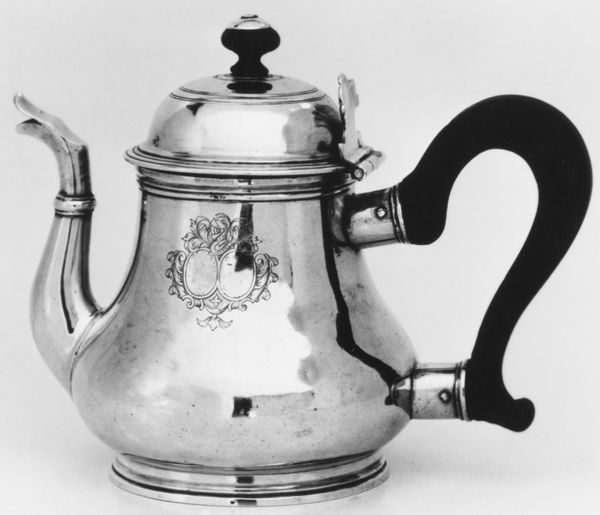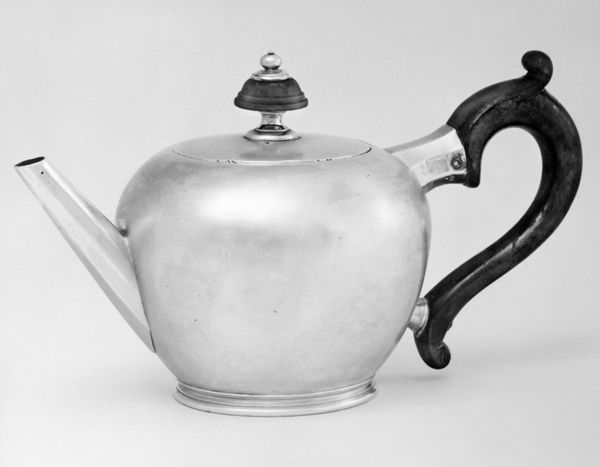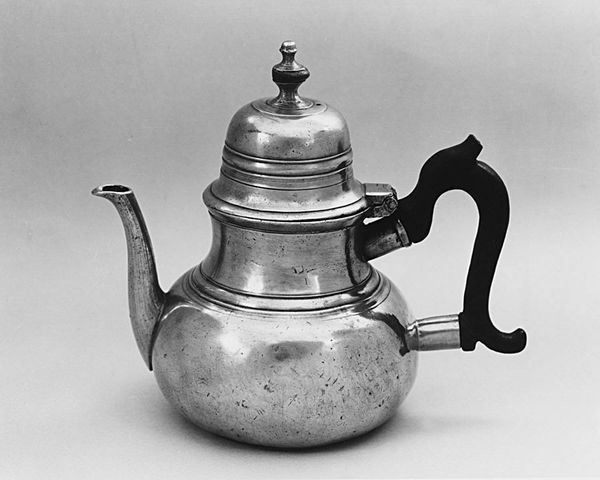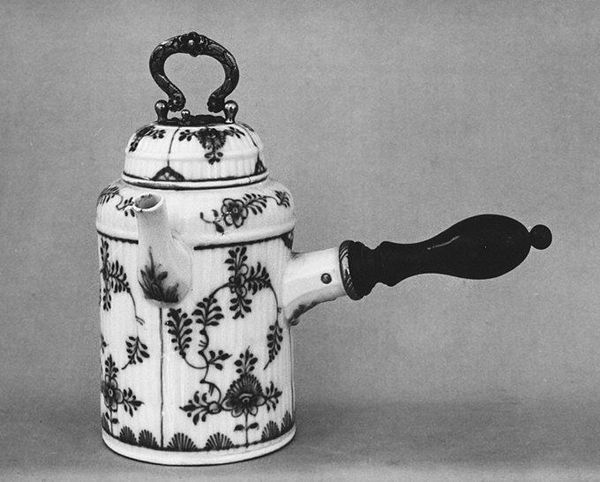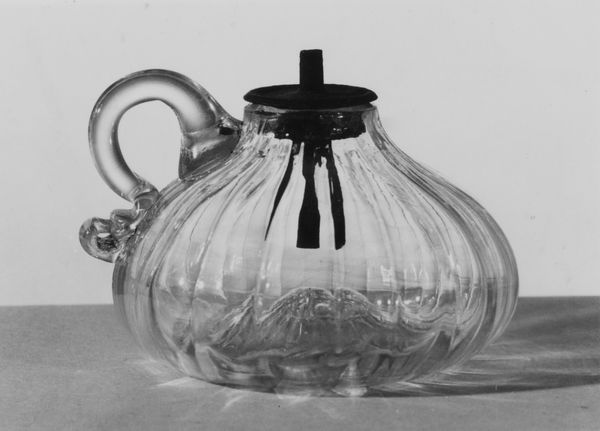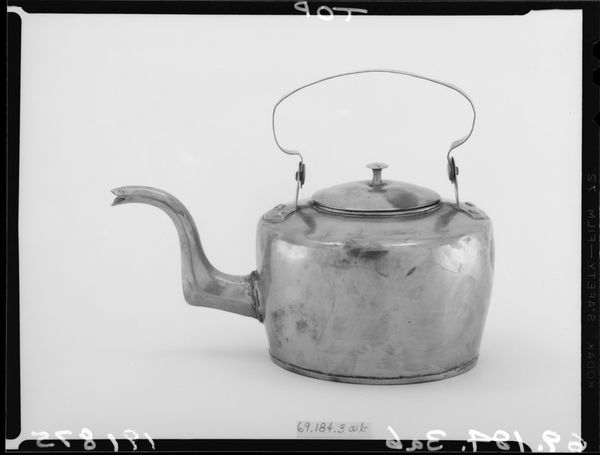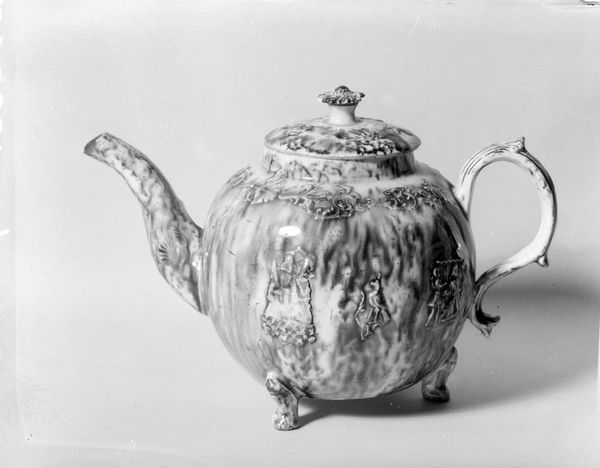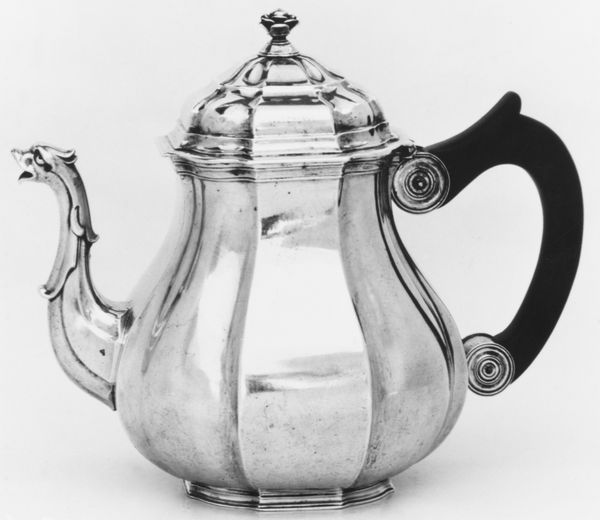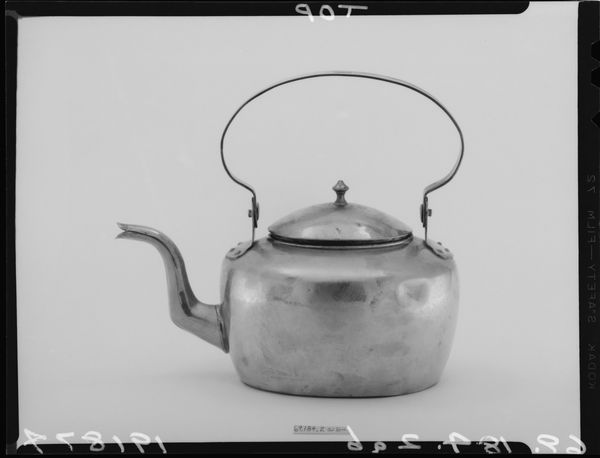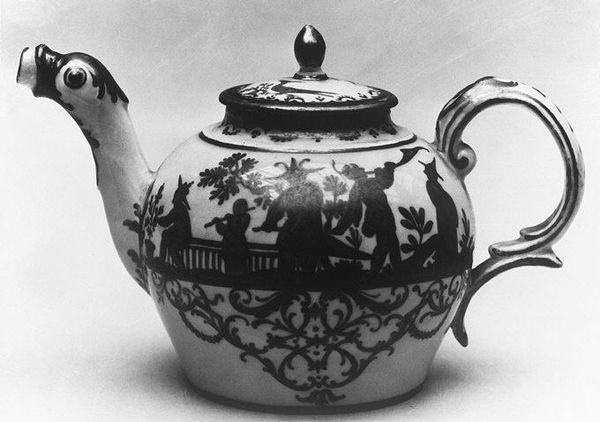
silver, metal, sculpture
#
silver
#
baroque
#
metal
#
sculpture
#
sculpture
Dimensions: Overall: 4 3/4 × 6 3/4 in. (12.1 × 17.1 cm)
Copyright: Public Domain
Curator: Let’s explore this beautiful silver teapot. It’s an 18th-century piece, currently residing here at the Metropolitan Museum of Art. Editor: Its form immediately strikes me as quite elegant. Though functional, there’s a clear emphasis on ornamentation and sculptural presence. It has a sense of restrained opulence. Curator: Absolutely. The craftsmanship is evident in the precise shaping of the silver. Note the fluted body and the way light catches those curves, and even those ornate little feet elevate it from the mundane to something approaching Baroque sculpture. Editor: And that high polish further enhances that. Silver, particularly in an object like this, speaks volumes about social class. This teapot isn’t just a vessel, it’s a statement about wealth and belonging within a privileged society that had the resources and access to display this sort of excess. How did colonial trade affect these artistic forms and cultural patterns? Curator: Good question. These forms developed alongside increasing global trade. Now, focus on its silhouette. Notice how the curves of the body mirror those on the lid? Editor: I do. While ostensibly functional, objects such as this teapot represent colonial enterprise in terms of economics and access to enslaved labor and raw materials that enable cultural systems like tea parties to be accessible to specific white communities. And silver became not just an element of status, but also of global political economy. How complicit was silver-crafting in enabling systems of exploitation? Curator: Undoubtedly connected. While we reflect on those entangled realities, it's also imperative to simply appreciate the maker's mastery over material, form, and surface treatment; to recognize the visual balance and intentional repetition that lends this "Teapot" its appeal. Editor: I see your point about technical achievement. For me, though, viewing this "Teapot" calls attention to more urgent historical reflections. The story that silver whispers regarding race and economic extraction can sometimes reverberate as a lot louder, even above surface aesthetics. Curator: Agreed, seeing an object from multiple perspectives reveals deeper meaning. Editor: Yes, so in looking closely, we may appreciate its material, its historical relevance, and its embedded ethics all the same.
Comments
No comments
Be the first to comment and join the conversation on the ultimate creative platform.


